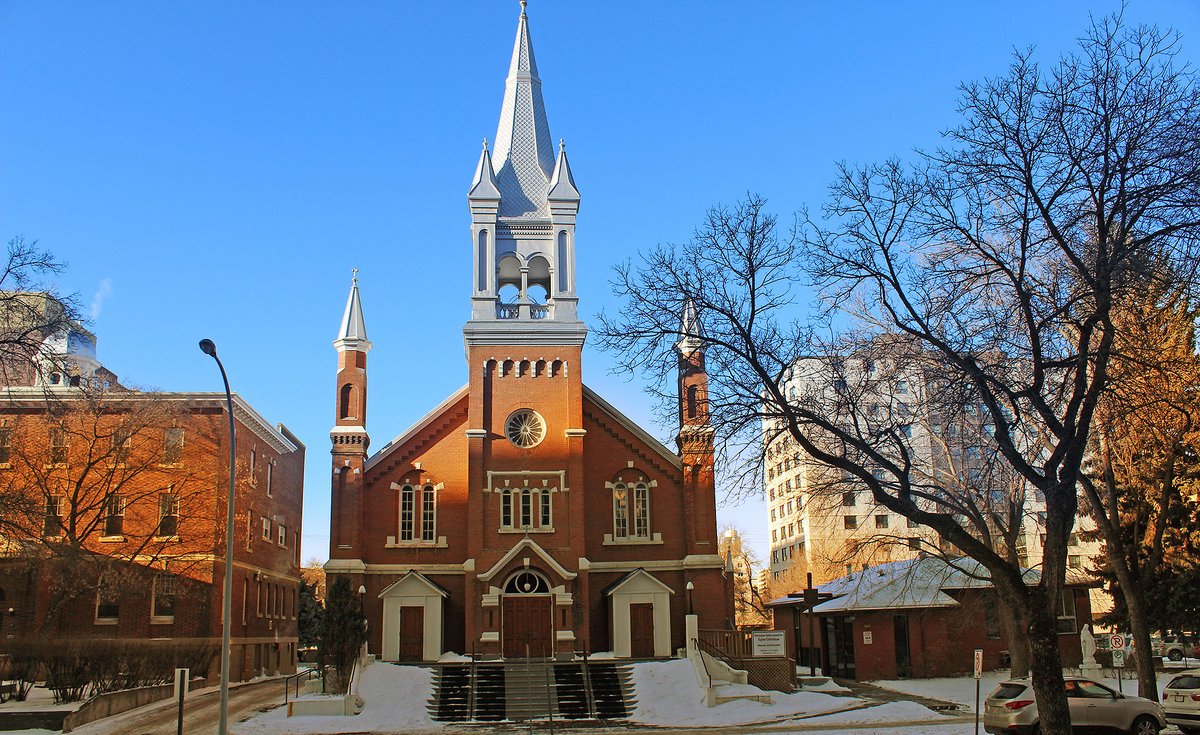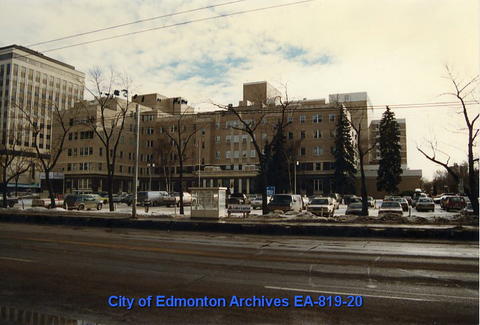
Tim's tweet prompted me to look into the history of a building on 109 Street I've always wondered about. Why *does* it look like a ruin? #yegheritage #yeghistory
https://twitter.com/timquerengesser/status/1618395039356563456
The building appears to have been built in 1911 by the Canadian Locomobile Co. Ltd. Just a few years after the first car arrived in Edmonton in 1904, Canadian Locomobile was selling Hupmobiles & Pathfinders in a crowded auto sales market. 







The building took up the entire lot on the corner of Ninth & Victoria (109 St & 100 Ave) and was so large that it was used for boxing matches that outsold smaller venues. 



Pathfinder, a vehicle made in Indianapolis, went bankrupt in 1917 and Canadian Locomobile didn't survive Edmonton's harsh WWI economy either. In 1918 the building on 109 Street was being used for vehicle repairs (Lines Motors). In 1924, Kenn's Service Garage operated out of it. 



Kenn's continued to operate through the Depression but in 1931 it was operating a side business of used car sales aimed at the "thrifty buyers" of the era. 

In 1949, Kenn's built a new facility across the street, where the Petro-Canada now is. Ross Motors subsequently sold cars out of the building but in 1954 Pontiac sedans made way for chesterfields. 





Graham & Reid furniture was established in 1907. In 1949 Harold Sprague bought the company & renamed it Sprague Furniture. In 1954 he moved the business that had been operating out of a now-demolished building on Jasper Avenue into the former automotive building on 109 St. 







Sprague Furniture had fun advertising, but in the early 1970s they made it clear that they didn't want any hippies (or women!) doing deliveries or working in their warehouse. 





In 1980 the business was promoting its history as "what has become Edmonton's oldest retail furniture store." 

In 1991 the "fully insured" business experienced a major fire and never reopened -- an abrupt ending to a homegrown urban furniture store just before big box retailers began scooping up the market. 

And then came computers. Isabel Bernette & Eldon Morrison's PC Corp wanted a more visible location so they bought the heavily damaged structured and hired architect Peter Bull to do something funky with it. pccorp.com/about-pc-corp/ 







Bull designed a new building within the brick walls -- a narrower structure to create space for some parking on the lot. This exposed a portion of the south wall to exterior view and, on the north, was effected through a deliberately rough cut of the old brick façade. 

The original plan was to remove the stucco that had covered up the original brick at some point in the building's life, but the stucco removal was damaging the fire-impacted brick so Bull and Bernette decided on a "broken-up look." 

Whatever you think of the design, it catches people's eye and that's probably helped business for PC Corp. And the old-new effect seems fitting for a building where both Hupmobiles and network servers have been sold. 

• • •
Missing some Tweet in this thread? You can try to
force a refresh






























